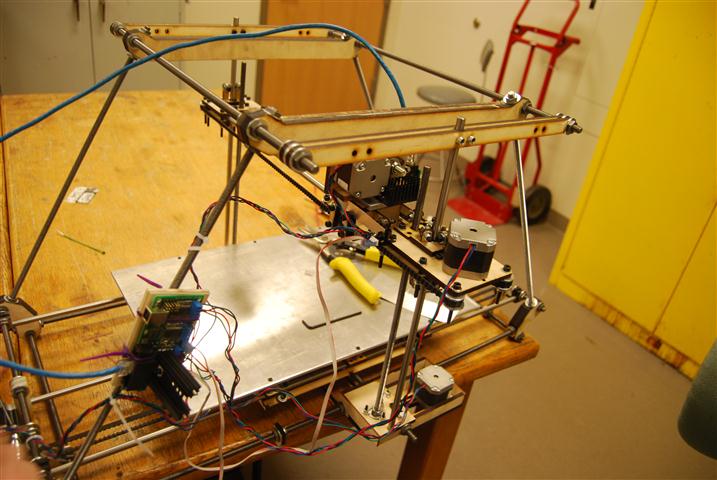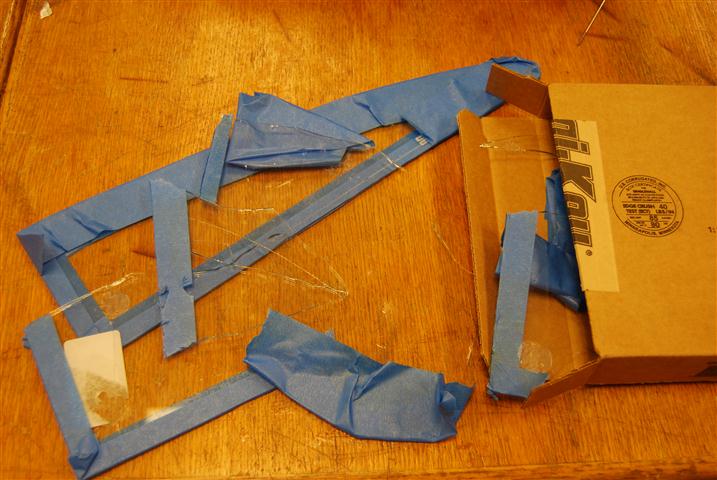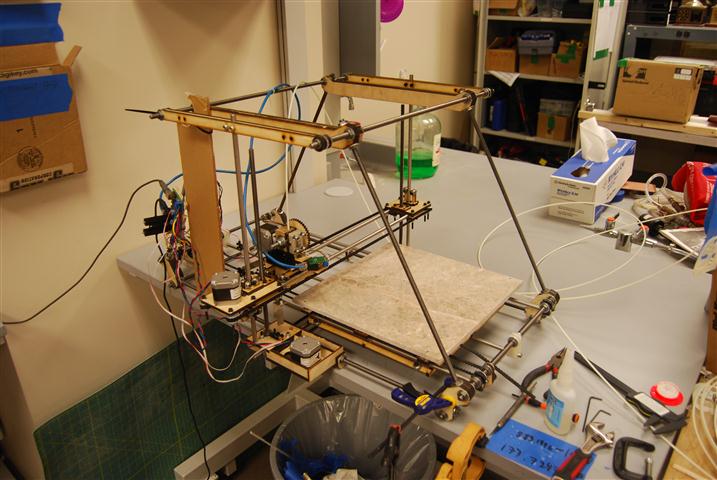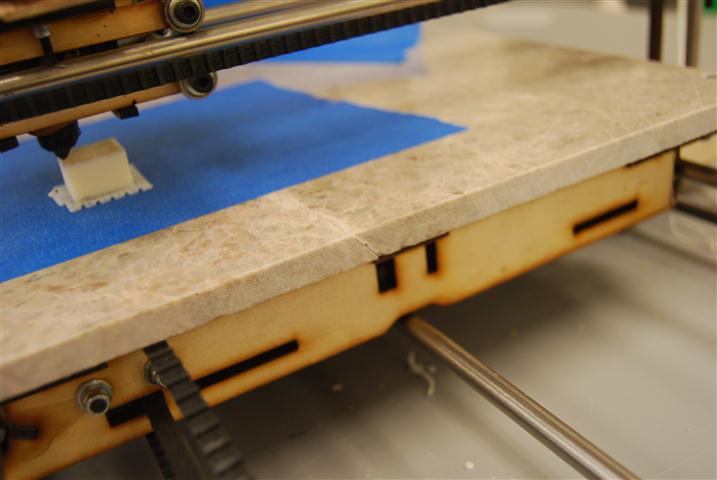RepRap Mondo – Part 6 – The Bed
- August 2nd, 2011
- Write comment
Aluminum Bed
The Mondo ships from Techzone with an aluminum bed. The 18″ x 12″ bed comes with six holes for mounting to the base support. Although the holes are nicely chamfered they did not include machine screws to go with the holes. None of the screws that fit through the holes were flush with the bed either. After hitting one of the bolt heads with the extruder nozzle we made a run to the hardware store to get a pack of 4-40 1″ screws with nuts.
With the proper screws in place we then set about leveling the bed. Several hours later I discovered that the bed was badly warped such that no amount of tweaking would make it flat. We measured a tip deflection of 3-4 mm near the ends which was a significant problem given that the layer thickness was 0.4 mm. For a while we continued printing by restricting the build area to a three inch square near a corner we leveled relative to the head.
Glass Bed
This deficiency in the bed lead us to our first alternate bed made from 3mm glass, which turned out to be 2.3 mm when meaured with calipers. The 18″ x 12″ glass bed was cut for us and only cost $5. It was mounted on top of the aluminum bed by placing six blobs of “clear silicone, waterproof sealant” that we picked up from the hardware store. We selected it based on its tolerance of heat up to 175 degrees Celsius which was above any of the temperatures we expected the bed to see. Once the glass was set on the silicone we then shimmed and squished down the bed as needed to get it level.
However, during later prints we found that heating the bed with a heat gun resulted in superior print quality with reduced warping. Unlike the metal bed which nicely conducted the heat through out, the glass bed required that heat be applied locally at the printing area. Although this arrangement worked for a while, as we tried to increase the local temperature the local heating eventually caused a crack to form across the bed starting from a chip on the edge. The glass bed wasn’t destroyed at that point, but rather as we tried to get the glass bed off we had to resort to breaking the bed down into more manageable, albeit razor sharp, sections.
Marble Bed
It was at this point that the suggestion was made that we try a thin ceramic material used as a base material in thick film circuit deposition. It was quickly determined that there was no local supplier and the material would be expensive. However, 3/8″ granite and marble floor tiles are cheaply available at the local hardware store and come in 12″ and 18″ squares. For this first experiment we purchased a 12″ marble tile for $2.28.
The marble bed has proven over the last week to be incredibly flat, durable, and gorgeous. Mounting to the bed support was accomplished by drilling four holes with a tile bit set before then chamfering the holes with a larger bit. It is also noteworthy that although this bed takes a while to heat up, once it is hot it tends to stay hot for an extended period of time.
The only problem he have had is in our selection of an individual tile. The tile that we selected had a natural crack running through it that was visible on both the top and bottom of the tile. The crack is more obvious when the bed is heated up. Despite this, once a printing surface is laid down, such as the painter’s tape shown, the crack has no effect on the usability of the surface.



